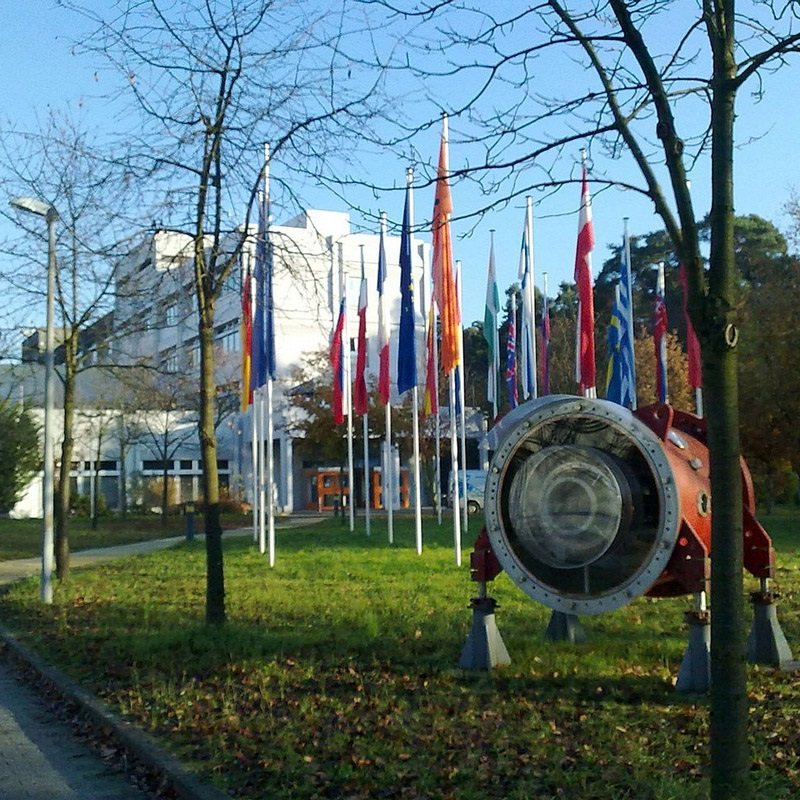Darmstadtium
110
Ds
Gruppe
10
Periode
7
Block
d
Protonen
Elektronen
Neutronen
110
110
171
Generelle Eigenschaften
Ordnungszahl
110
Atommasse
[281]
Massenzahl
281
Kategorie
Übergangsmetalle
Farbe
n/a
Radioaktiv
Ja
Benannt nach der deutschen Stadt Darmstadt
Kristallstruktur
n/a
Geschichte
Darmstadtium was first created in 1994, at the Institute for Heavy Ion Research (Gesellschaft für Schwerionenforschung) in Darmstadt, Germany, by Peter Armbruster and Gottfried Münzenberg, under the direction of Sigurd Hofmann.
The team bombarded a lead-208 target with accelerated nuclei of nickel-62 and detected a single atom of the isotope darmstadtium-269.
The team bombarded a lead-208 target with accelerated nuclei of nickel-62 and detected a single atom of the isotope darmstadtium-269.
Elektronen pro Schale
2, 8, 18, 32, 32, 16, 2
Elektronenkonfiguration
[Rn] 5f14 6d8 7s2
Darmstadtium has no stable or naturally-occurring isotopes
Physikalische Eigenschaften
Aggregatzustand
Unbekannt
Dichte
-
Schmelzpunkt
-
Siedepunkt
-
Schmelzwärme
n/a
Verdampfungswärme
n/a
Spezifische Wärmekapazität
-
Häufigkeit in der Erdkruste
n/a
Häufigkeit im Universum
n/a

Danksagungen für Bilder: Wikimedia Commons (Commander-pirx)
The element was discovered at the Institute for Heavy Ion Research in Darmstadt, Germany
CAS-Nummer
54083-77-1
PubChem CID-Nummer
n/a
Atomeigenschaften
Atomradius
-
Kovalenter Radius
128 pm
Elektronegativität
-
Ionisierungsenergie
-
Molares Volumen
-
Wärmeleitfähigkeit
-
Oxidationszustände
6
Anwendung
Darmstadtium is used for scientific research purposes only.
Darmstadtium is harmful due to its radioactivity
Isotope
Stabile Isotope
-Instabile Isotope
267Ds, 268Ds, 269Ds, 270Ds, 271Ds, 272Ds, 273Ds, 274Ds, 275Ds, 276Ds, 277Ds, 278Ds, 279Ds, 280Ds, 281Ds